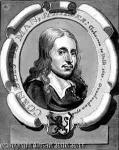Cornelis De Man
Cornelis De Man
Place: Haarlem
Born: 1562
Death: 1638
Biography:
was a prominent Dutch Golden Age painter and draughtsman, active during the 16th and 17th centuries. Born in Haarlem, Netherlands, in 1562, he is considered one of the leading Northern Mannerist artists in the region and an important forerunner of Frans Hals as a portraitist.
Early Life and Training
Cornelis De Manwas a pupil of Pieter Pietersz in Haarlem and later Gillis Coignet in Antwerp. This training laid the foundation for his future success as a painter. His work is characterized by its meticulous attention to detail, rich colors, and masterful use of light and shadow.
Artistic Style and Notable Works
Cornelis De Man's artistic style is notable for its blend of realism and naturalism, which were influenced by the Italian Renaissance. His paintings often featured complex iconography, with a focus on everyday life and portraits. Some of his notable works include The Baptism of Christ, Massacre of the Innocents, and The wedding of Peleus and Thetis. These paintings showcase his skill in capturing the essence of his subjects with remarkable detail and emotion.
Influence and Legacy
Cornelis De Man's influence on the development of Northern Mannerist painting is significant. He played a crucial role in shaping the style of Frans Hals, who would later become one of the most renowned portraitists of the Dutch Golden Age. The Museum Huis ten Bosch in The Hague, Netherlands, features several works by Cornelis De Man, including his portraits and genre scenes.
- Cornelis De Man's work can be found in various museums and collections, including the Museum Huis ten Bosch and the Frans Hals Museum in Haarlem.
- His paintings are characterized by their attention to detail, rich colors, and masterful use of light and shadow.
- Cornelis De Man's influence on Frans Hals and other Northern Mannerist artists is well-documented.
- His work continues to be studied by art historians and scholars, providing valuable insights into the development of Northern Mannerist painting.
works by Cornelis De Man can be found on https://Wikioo.org, which provides a comprehensive guide to the artist's life and work. The Cornelis De Man biography on Wikipedia offers further information on his life, training, and artistic style. In conclusion, Cornelis De Man was a significant figure in the development of Northern Mannerist painting, and his work continues to be celebrated for its beauty, detail, and emotion. His influence on Frans Hals and other artists of the Dutch Golden Age is well-documented, making him an important part of art history.
Wikipedia link: Click Here













